| September 1, 2007
SACD: Not Corpse but Phoenix
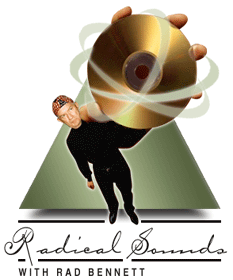 Since my last column, I’ve
taken part in another of those "SACD is dead" conversations. Well, it’s
not. Audiophile establishments like Acoustic Sounds list many new SACD releases each week,
and you can find them all over Amazon.com and eBay. Channel Classics, Chesky, and
Pentatone now issue only hybrid SACD/CDs -- no double inventory for them. Almost
every other label is issuing SACDs, some as single hybrid releases, and a few, notably
Telarc, still doing double inventory by releasing SACD/CD and CD-only titles, which
seems oddly redundant. Since my last column, I’ve
taken part in another of those "SACD is dead" conversations. Well, it’s
not. Audiophile establishments like Acoustic Sounds list many new SACD releases each week,
and you can find them all over Amazon.com and eBay. Channel Classics, Chesky, and
Pentatone now issue only hybrid SACD/CDs -- no double inventory for them. Almost
every other label is issuing SACDs, some as single hybrid releases, and a few, notably
Telarc, still doing double inventory by releasing SACD/CD and CD-only titles, which
seems oddly redundant.
I prefer DVD-Audio to SACD for high-resolution sound, but
few DVD-As are now being released, and they’re incompatible with CD players unless
they’re half of a DualDisc -- and that format, I think, really is dead.
When Sony launched SACD with a grand plan to market to the
masses, they made a big mistake. Their first releases were SACD-only -- no CD layer. This
relegated SACD to the audiophile market, where it has remained ever since, a niche format.
This needn’t have happened -- nowadays, virtually all SACD releases are CD-compatible
hybrids playable on any CD player. Despite that, SACD is still an audiophile format,
providing the highest sampling rate and, if properly mastered, sounding a wee bit better
than the corresponding CD or CD layer.
It puzzles me, then, that some audiophiles speak against
SACD, and even seem to want it to die. This seems myopic. It is the audiophile
community that should most want a hi-rez multichannel format, to get the best results from
their expensive equipment. But I’ve run into more than one person who prefers CD to
SACD.
So, beginning next month, we'll have a column devoted to
reference CDs, to cycle with "Radical Sounds" and "Keepers."
In the meantime, and to end the summer of 2007, here are
some more great high-resolution discs.
Bliss: Elegiac Sonnet
Gurney: Ludlow & Teme
Vaughan Williams: On Wenlock Edge
Warlock: The Curlew
James Gilchrist, tenor; Anna Tilbrook piano; Fitzwilliam String Quartet.
Linn CKD 296, Hybrid Multichannel SACD.
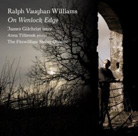 The young Ralph Vaughan Williams wrote
the song cycle On Wenlock Edge in 1908, shortly after his return from Paris.
It’s not surprising, then, that while most of the work is bold and very English, it
contains traces of Debussyan Impressionism. The texts are taken from A.E. Housman’s A
Shropshire Lad, which has provided many British composers with words for their music,
and is scored for the unusual combination of tenor, string quartet, and piano -- as are
the Bliss and Gurney works here. Peter Warlock’s The Curlew, settings of four
poems by William Butler Yeats, is more exotically scored: for flute, English horn, and
string quartet. Tenor James Gilchrist and the supporting instrumentalists are beyond
reproach. This is intimate music making of the first rank and Linn has provided
appropriate sound. The balances of the various instruments with the tenor and with each
other are ideal. Gilchrist is heard mostly in the center channel, the instruments spread
behind him. The up-close recording is perhaps a bit edgy, but in a way that’s
exciting rather than detrimental. The rear channels provide enough reverb to replicate the
sound of a small concert hall, making the musicians sound very three-dimensional and
giving the multichannel tracks a slight edge over the refined two-channel presentation. The young Ralph Vaughan Williams wrote
the song cycle On Wenlock Edge in 1908, shortly after his return from Paris.
It’s not surprising, then, that while most of the work is bold and very English, it
contains traces of Debussyan Impressionism. The texts are taken from A.E. Housman’s A
Shropshire Lad, which has provided many British composers with words for their music,
and is scored for the unusual combination of tenor, string quartet, and piano -- as are
the Bliss and Gurney works here. Peter Warlock’s The Curlew, settings of four
poems by William Butler Yeats, is more exotically scored: for flute, English horn, and
string quartet. Tenor James Gilchrist and the supporting instrumentalists are beyond
reproach. This is intimate music making of the first rank and Linn has provided
appropriate sound. The balances of the various instruments with the tenor and with each
other are ideal. Gilchrist is heard mostly in the center channel, the instruments spread
behind him. The up-close recording is perhaps a bit edgy, but in a way that’s
exciting rather than detrimental. The rear channels provide enough reverb to replicate the
sound of a small concert hall, making the musicians sound very three-dimensional and
giving the multichannel tracks a slight edge over the refined two-channel presentation.
Lauren White: At Last
Groove Note GRV 1037-3, Hybrid Stereo SACD.
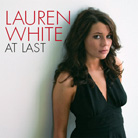 Groove Note Records has always done a
better-than-average job of recording jazz. But even by its own high standards, this
two-channel disc is outstanding. It sounds completely natural, Lauren White’s voice
and each instrument anchored firmly in the front soundstage. In some jazz recordings, the
piano wanders all over the place while the voice remains fixed in space. Not here.
Everyone stays clearly focused and in impeccable balance. The balance accorded the bass
especially impressed me: Its sound is so even, with no note sticking out over another, and
the instrument is correctly integrated into the ensemble -- as is the Hammond B-3.
Musically, the disc is not quite as successful. White, a 20-year-old singer from Texas,
has the same vocal coach as Norah Jones. Her voice is pleasant, and she shows lots of
promise in "My Funny Valentine" and her own "Do You Remember."
It’s to White’s credit that she uses subtle effects to create a style rather
than practicing histrionics. But "Love for Sale," "At Last," and
"Mack the Knife" simply need a bigger voice and a less polite approach. However,
At Last is only White’s first album; I look forward to hearing the second,
especially if it’s as well recorded as this one. Groove Note Records has always done a
better-than-average job of recording jazz. But even by its own high standards, this
two-channel disc is outstanding. It sounds completely natural, Lauren White’s voice
and each instrument anchored firmly in the front soundstage. In some jazz recordings, the
piano wanders all over the place while the voice remains fixed in space. Not here.
Everyone stays clearly focused and in impeccable balance. The balance accorded the bass
especially impressed me: Its sound is so even, with no note sticking out over another, and
the instrument is correctly integrated into the ensemble -- as is the Hammond B-3.
Musically, the disc is not quite as successful. White, a 20-year-old singer from Texas,
has the same vocal coach as Norah Jones. Her voice is pleasant, and she shows lots of
promise in "My Funny Valentine" and her own "Do You Remember."
It’s to White’s credit that she uses subtle effects to create a style rather
than practicing histrionics. But "Love for Sale," "At Last," and
"Mack the Knife" simply need a bigger voice and a less polite approach. However,
At Last is only White’s first album; I look forward to hearing the second,
especially if it’s as well recorded as this one.
Saint-Saëns: Africa: Fantasy for Piano &
Orchestra; Parysatis: Airs de ballet; Le jota aragonese; Samson
et Dalila: Grand Fantasy; Tarantelle; Sarabande et Rigaudon;
Danse Macabre (original version for tenor and orchestra); Marche
militaire français; The Muse and the Poet; Ascanio: Valse-Finale
Anthony Roden, tenor; Gwendolyn Monk, piano; London Philharmonic; Geoffrey Simon,
conductor.
Cala 4031, Hybrid Multichannel SACD.
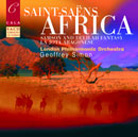 This disc is so full of
Saint-Saëns’ charming, less consequential music that some might want to title it Bonbons.
Africa is but one of many pieces for piano and orchestra that the composer wrote in
addition to his five piano concertos. The Grand Fantasy from Samson et Dalila
was arranged by Luigini; it was common in the late 19th century to arrange such
"opera synopses without words." The Marche militaire français is
familiar, but this was the first time I’d heard the original version of Danse
Macabre with its grisly text. Everything is performed with charm and élan. The
orchestral playing is first-rate, and conductor Geoffrey Simon catches the lilt of
everything just right. The sound defies criticism -- everything about it seems just right.
The perspective is tenth-row, yet there is sufficient presence. The recording is
incredibly transparent, allowing the listener to hear all of the inner voices without
calling attention to them. The highs are bright but sweet, not harsh. The two-channel
presentation is absolutely clean and clear; the multichannel tracks add welcome presence
and space. A companion disc [Cala 4032] contains Saint-Saëns’ Symphony No.3
("Organ") and the rarely heard Requiem. This disc is so full of
Saint-Saëns’ charming, less consequential music that some might want to title it Bonbons.
Africa is but one of many pieces for piano and orchestra that the composer wrote in
addition to his five piano concertos. The Grand Fantasy from Samson et Dalila
was arranged by Luigini; it was common in the late 19th century to arrange such
"opera synopses without words." The Marche militaire français is
familiar, but this was the first time I’d heard the original version of Danse
Macabre with its grisly text. Everything is performed with charm and élan. The
orchestral playing is first-rate, and conductor Geoffrey Simon catches the lilt of
everything just right. The sound defies criticism -- everything about it seems just right.
The perspective is tenth-row, yet there is sufficient presence. The recording is
incredibly transparent, allowing the listener to hear all of the inner voices without
calling attention to them. The highs are bright but sweet, not harsh. The two-channel
presentation is absolutely clean and clear; the multichannel tracks add welcome presence
and space. A companion disc [Cala 4032] contains Saint-Saëns’ Symphony No.3
("Organ") and the rarely heard Requiem.
Elgar: Enigma Variations; Introduction and
Allegro
Sir Colin Davis, London Symphony Orchestra.
LSO Live LSO0609, Hybrid Multichannel SACD.
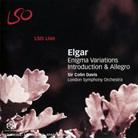 For those who think SACD is dead,
consider this embarrassment of riches. Just a few months ago I reviewed Paavo Järvi and
the Cincinnati Symphony’s excellent performance on Telarc of the Enigma Variations,
and here is another just as worthy. Sir Colin Davis really knows how this music should go.
The tempos seem exactly right, and Davis understands Elgar’s orchestration, which
automatically builds crescendos and diminuendos into the music by adding or subtracting
instruments at exactly the right place in the music. The heart of the piece, Nimrod
(Variation 10), is treated with great sentiment but without sentimentality, and its climax
here is more effective than I had ever heard it before. Davis brings the same kind of
restrained passion to the Introduction and Allegro, for string quartet and string
orchestra. The recorded sound is ideal. How does the recording team manage that with live
recordings? The balances are just so, and the sound is warm and full yet also detailed.
The violins sound sweet but never edgy, even when playing rapid hellfire passages.
There’s not quite as much organ in the finale as I’d like -- the Telarc wins in
that department -- but otherwise, I can’t imagine better sound for these works. The
utmost sense of presence will be heard from the multichannel layer, but the two-channel
tracks are quite good, too. For those who think SACD is dead,
consider this embarrassment of riches. Just a few months ago I reviewed Paavo Järvi and
the Cincinnati Symphony’s excellent performance on Telarc of the Enigma Variations,
and here is another just as worthy. Sir Colin Davis really knows how this music should go.
The tempos seem exactly right, and Davis understands Elgar’s orchestration, which
automatically builds crescendos and diminuendos into the music by adding or subtracting
instruments at exactly the right place in the music. The heart of the piece, Nimrod
(Variation 10), is treated with great sentiment but without sentimentality, and its climax
here is more effective than I had ever heard it before. Davis brings the same kind of
restrained passion to the Introduction and Allegro, for string quartet and string
orchestra. The recorded sound is ideal. How does the recording team manage that with live
recordings? The balances are just so, and the sound is warm and full yet also detailed.
The violins sound sweet but never edgy, even when playing rapid hellfire passages.
There’s not quite as much organ in the finale as I’d like -- the Telarc wins in
that department -- but otherwise, I can’t imagine better sound for these works. The
utmost sense of presence will be heard from the multichannel layer, but the two-channel
tracks are quite good, too.
The Doors: Perception
Rhino R2 77645, 6 CDs, 6 DVD-Audio discs. Mixes: 2.0 and 5.1 MLP, Dolby Digital 5.1 and
DTS 5.1.
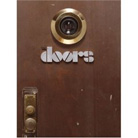 Perception is a box
containing the "40th Anniversary Remixes" of the Doors’ six studio albums
-- The Doors, Strange Days, Waiting for the Sun, The Soft Parade,
Morrison Hotel, and L.A. Woman -- each in a two-disc package: the remastered
two-channel tracks on CD, MLP two- and multichannel mixes on DVD-Audio. The CDs are just
fine, and much better than the original ones. But it’s when you play the DVD-As that
you’ll be impressed. The sound is mainly in the front three speakers, with some nifty
surround effects: rear-channel thunder in "Riders on the Storm," a neat
360-degree guitar pan in "Hello, I Love You," and the soldiers in "The
Unknown Soldier" march in from the rear. Most of the time, however, the rears are
used for ambience and background vocals. Jim Morrison’s voice is in the center
channel, occasionally bleeding very slightly into the left and right front speakers. To my
mind, this is how it should be done -- the arrangement makes for outstanding clarity. The
Doors just knocked me out -- I’ve never heard it sound so good. Sharply focused
keyboards, tight and ample bass, solid vocals, and quality drumming that I don’t
remember at all from the originals. But that’s the point of the Perception
remixes -- you’ll hear detail you never knew was there, and it’s detail that
counts. The only dropped ball is Strange Days; its sound just doesn’t measure
up to the others. Unfortunately, the price of this set is high ($149.98), and only L.A.
Woman has so far been released as a separate DVD-A. But you can find used sets on eBay
or at Amazon.com. It’s worth the search. Perception is a box
containing the "40th Anniversary Remixes" of the Doors’ six studio albums
-- The Doors, Strange Days, Waiting for the Sun, The Soft Parade,
Morrison Hotel, and L.A. Woman -- each in a two-disc package: the remastered
two-channel tracks on CD, MLP two- and multichannel mixes on DVD-Audio. The CDs are just
fine, and much better than the original ones. But it’s when you play the DVD-As that
you’ll be impressed. The sound is mainly in the front three speakers, with some nifty
surround effects: rear-channel thunder in "Riders on the Storm," a neat
360-degree guitar pan in "Hello, I Love You," and the soldiers in "The
Unknown Soldier" march in from the rear. Most of the time, however, the rears are
used for ambience and background vocals. Jim Morrison’s voice is in the center
channel, occasionally bleeding very slightly into the left and right front speakers. To my
mind, this is how it should be done -- the arrangement makes for outstanding clarity. The
Doors just knocked me out -- I’ve never heard it sound so good. Sharply focused
keyboards, tight and ample bass, solid vocals, and quality drumming that I don’t
remember at all from the originals. But that’s the point of the Perception
remixes -- you’ll hear detail you never knew was there, and it’s detail that
counts. The only dropped ball is Strange Days; its sound just doesn’t measure
up to the others. Unfortunately, the price of this set is high ($149.98), and only L.A.
Woman has so far been released as a separate DVD-A. But you can find used sets on eBay
or at Amazon.com. It’s worth the search.
Berlioz: Harold in Italy, Béatrice
et Bénédict, Le Corsaire, Benvenuto Cellini, Roman
Carnival
William Primrose, viola; Boston Symphony Orchestra; Charles Munch, conductor.
RCA Living Stereo 88697, Hybrid Multichannel SACD.
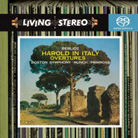 Other conductors, notably Sir Colin
Davis, have made the music of Berlioz a specialty, but none has made it as special as did
Charles Munch. During his tenure as music director of the Boston Symphony, Munch performed
a lot of Berlioz, and fortunately for us, the RCA engineers were on hand to record it.
Munch seemed to be in touch with the inner spirit of the music, and conveyed his
excitement of discovery to the BSO musicians, who brought it to the audience. Munch was
sensitive to the delicate passages and romantic interludes as well as to the more
bombastic sections, but even more than that, he had an undeniable flair for
Berlioz. All of the recordings on this hybrid disc were made in 1958 and 1959, when Munch
was at his zenith. The RCA engineers had by then gotten the new stereo recording system
down and were producing splendid three-track master tapes. The SACD format lets us hear
those tapes as the original engineers heard them, with separate left, right, and center
channels. There are no surround channels -- there were none on the master tapes, and RCA
has wisely chosen not to synthesize any. As in other Living Stereo recordings, the center
channel frees the left and right channels and makes the orchestra sound much more focused
and transparent. Berlioz instructed the solo violist in Harold in Italy to
"stand forward, near the public and apart from the orchestra." The effect is
achieved here by having William Primrose sound from the center channel, the orchestra
arrayed behind him. I’ve known these recordings in all forms: LP, four-track
reel-to-reel tape, and CD. This SACD edition lets me hear them as I’ve always thought
they were meant to be heard. The two-channel tracks are perfectly fine, but if you want to
experience the total picture, you’ll need that center channel. Other conductors, notably Sir Colin
Davis, have made the music of Berlioz a specialty, but none has made it as special as did
Charles Munch. During his tenure as music director of the Boston Symphony, Munch performed
a lot of Berlioz, and fortunately for us, the RCA engineers were on hand to record it.
Munch seemed to be in touch with the inner spirit of the music, and conveyed his
excitement of discovery to the BSO musicians, who brought it to the audience. Munch was
sensitive to the delicate passages and romantic interludes as well as to the more
bombastic sections, but even more than that, he had an undeniable flair for
Berlioz. All of the recordings on this hybrid disc were made in 1958 and 1959, when Munch
was at his zenith. The RCA engineers had by then gotten the new stereo recording system
down and were producing splendid three-track master tapes. The SACD format lets us hear
those tapes as the original engineers heard them, with separate left, right, and center
channels. There are no surround channels -- there were none on the master tapes, and RCA
has wisely chosen not to synthesize any. As in other Living Stereo recordings, the center
channel frees the left and right channels and makes the orchestra sound much more focused
and transparent. Berlioz instructed the solo violist in Harold in Italy to
"stand forward, near the public and apart from the orchestra." The effect is
achieved here by having William Primrose sound from the center channel, the orchestra
arrayed behind him. I’ve known these recordings in all forms: LP, four-track
reel-to-reel tape, and CD. This SACD edition lets me hear them as I’ve always thought
they were meant to be heard. The two-channel tracks are perfectly fine, but if you want to
experience the total picture, you’ll need that center channel.
...Rad Bennett
radb@ultraaudio.com

All contents copyright Schneider Publishing Inc., all rights
reserved.
Any reproduction, without permission, is prohibited.
Ultra Audio is part of the SoundStage! Network.
A world of websites and publications for audio, video, music, and movie enthusiasts. |

 Since my last column, I’ve
taken part in another of those "SACD is dead" conversations. Well, it’s
not. Audiophile establishments like Acoustic Sounds list many new SACD releases each week,
and you can find them all over Amazon.com and eBay. Channel Classics, Chesky, and
Pentatone now issue only hybrid SACD/CDs -- no double inventory for them. Almost
every other label is issuing SACDs, some as single hybrid releases, and a few, notably
Telarc, still doing double inventory by releasing SACD/CD and CD-only titles, which
seems oddly redundant.
Since my last column, I’ve
taken part in another of those "SACD is dead" conversations. Well, it’s
not. Audiophile establishments like Acoustic Sounds list many new SACD releases each week,
and you can find them all over Amazon.com and eBay. Channel Classics, Chesky, and
Pentatone now issue only hybrid SACD/CDs -- no double inventory for them. Almost
every other label is issuing SACDs, some as single hybrid releases, and a few, notably
Telarc, still doing double inventory by releasing SACD/CD and CD-only titles, which
seems oddly redundant. The young Ralph Vaughan Williams wrote
the song cycle On Wenlock Edge in 1908, shortly after his return from Paris.
It’s not surprising, then, that while most of the work is bold and very English, it
contains traces of Debussyan Impressionism. The texts are taken from A.E. Housman’s A
Shropshire Lad, which has provided many British composers with words for their music,
and is scored for the unusual combination of tenor, string quartet, and piano -- as are
the Bliss and Gurney works here. Peter Warlock’s The Curlew, settings of four
poems by William Butler Yeats, is more exotically scored: for flute, English horn, and
string quartet. Tenor James Gilchrist and the supporting instrumentalists are beyond
reproach. This is intimate music making of the first rank and Linn has provided
appropriate sound. The balances of the various instruments with the tenor and with each
other are ideal. Gilchrist is heard mostly in the center channel, the instruments spread
behind him. The up-close recording is perhaps a bit edgy, but in a way that’s
exciting rather than detrimental. The rear channels provide enough reverb to replicate the
sound of a small concert hall, making the musicians sound very three-dimensional and
giving the multichannel tracks a slight edge over the refined two-channel presentation.
The young Ralph Vaughan Williams wrote
the song cycle On Wenlock Edge in 1908, shortly after his return from Paris.
It’s not surprising, then, that while most of the work is bold and very English, it
contains traces of Debussyan Impressionism. The texts are taken from A.E. Housman’s A
Shropshire Lad, which has provided many British composers with words for their music,
and is scored for the unusual combination of tenor, string quartet, and piano -- as are
the Bliss and Gurney works here. Peter Warlock’s The Curlew, settings of four
poems by William Butler Yeats, is more exotically scored: for flute, English horn, and
string quartet. Tenor James Gilchrist and the supporting instrumentalists are beyond
reproach. This is intimate music making of the first rank and Linn has provided
appropriate sound. The balances of the various instruments with the tenor and with each
other are ideal. Gilchrist is heard mostly in the center channel, the instruments spread
behind him. The up-close recording is perhaps a bit edgy, but in a way that’s
exciting rather than detrimental. The rear channels provide enough reverb to replicate the
sound of a small concert hall, making the musicians sound very three-dimensional and
giving the multichannel tracks a slight edge over the refined two-channel presentation. Groove Note Records has always done a
better-than-average job of recording jazz. But even by its own high standards, this
two-channel disc is outstanding. It sounds completely natural, Lauren White’s voice
and each instrument anchored firmly in the front soundstage. In some jazz recordings, the
piano wanders all over the place while the voice remains fixed in space. Not here.
Everyone stays clearly focused and in impeccable balance. The balance accorded the bass
especially impressed me: Its sound is so even, with no note sticking out over another, and
the instrument is correctly integrated into the ensemble -- as is the Hammond B-3.
Musically, the disc is not quite as successful. White, a 20-year-old singer from Texas,
has the same vocal coach as Norah Jones. Her voice is pleasant, and she shows lots of
promise in "My Funny Valentine" and her own "Do You Remember."
It’s to White’s credit that she uses subtle effects to create a style rather
than practicing histrionics. But "Love for Sale," "At Last," and
"Mack the Knife" simply need a bigger voice and a less polite approach. However,
At Last is only White’s first album; I look forward to hearing the second,
especially if it’s as well recorded as this one.
Groove Note Records has always done a
better-than-average job of recording jazz. But even by its own high standards, this
two-channel disc is outstanding. It sounds completely natural, Lauren White’s voice
and each instrument anchored firmly in the front soundstage. In some jazz recordings, the
piano wanders all over the place while the voice remains fixed in space. Not here.
Everyone stays clearly focused and in impeccable balance. The balance accorded the bass
especially impressed me: Its sound is so even, with no note sticking out over another, and
the instrument is correctly integrated into the ensemble -- as is the Hammond B-3.
Musically, the disc is not quite as successful. White, a 20-year-old singer from Texas,
has the same vocal coach as Norah Jones. Her voice is pleasant, and she shows lots of
promise in "My Funny Valentine" and her own "Do You Remember."
It’s to White’s credit that she uses subtle effects to create a style rather
than practicing histrionics. But "Love for Sale," "At Last," and
"Mack the Knife" simply need a bigger voice and a less polite approach. However,
At Last is only White’s first album; I look forward to hearing the second,
especially if it’s as well recorded as this one. This disc is so full of
Saint-Saëns’ charming, less consequential music that some might want to title it Bonbons.
Africa is but one of many pieces for piano and orchestra that the composer wrote in
addition to his five piano concertos. The Grand Fantasy from Samson et Dalila
was arranged by Luigini; it was common in the late 19th century to arrange such
"opera synopses without words." The Marche militaire français is
familiar, but this was the first time I’d heard the original version of Danse
Macabre with its grisly text. Everything is performed with charm and élan. The
orchestral playing is first-rate, and conductor Geoffrey Simon catches the lilt of
everything just right. The sound defies criticism -- everything about it seems just right.
The perspective is tenth-row, yet there is sufficient presence. The recording is
incredibly transparent, allowing the listener to hear all of the inner voices without
calling attention to them. The highs are bright but sweet, not harsh. The two-channel
presentation is absolutely clean and clear; the multichannel tracks add welcome presence
and space. A companion disc [Cala 4032] contains Saint-Saëns’ Symphony No.3
("Organ") and the rarely heard Requiem.
This disc is so full of
Saint-Saëns’ charming, less consequential music that some might want to title it Bonbons.
Africa is but one of many pieces for piano and orchestra that the composer wrote in
addition to his five piano concertos. The Grand Fantasy from Samson et Dalila
was arranged by Luigini; it was common in the late 19th century to arrange such
"opera synopses without words." The Marche militaire français is
familiar, but this was the first time I’d heard the original version of Danse
Macabre with its grisly text. Everything is performed with charm and élan. The
orchestral playing is first-rate, and conductor Geoffrey Simon catches the lilt of
everything just right. The sound defies criticism -- everything about it seems just right.
The perspective is tenth-row, yet there is sufficient presence. The recording is
incredibly transparent, allowing the listener to hear all of the inner voices without
calling attention to them. The highs are bright but sweet, not harsh. The two-channel
presentation is absolutely clean and clear; the multichannel tracks add welcome presence
and space. A companion disc [Cala 4032] contains Saint-Saëns’ Symphony No.3
("Organ") and the rarely heard Requiem. For those who think SACD is dead,
consider this embarrassment of riches. Just a few months ago I reviewed Paavo Järvi and
the Cincinnati Symphony’s excellent performance on Telarc of the Enigma Variations,
and here is another just as worthy. Sir Colin Davis really knows how this music should go.
The tempos seem exactly right, and Davis understands Elgar’s orchestration, which
automatically builds crescendos and diminuendos into the music by adding or subtracting
instruments at exactly the right place in the music. The heart of the piece, Nimrod
(Variation 10), is treated with great sentiment but without sentimentality, and its climax
here is more effective than I had ever heard it before. Davis brings the same kind of
restrained passion to the Introduction and Allegro, for string quartet and string
orchestra. The recorded sound is ideal. How does the recording team manage that with live
recordings? The balances are just so, and the sound is warm and full yet also detailed.
The violins sound sweet but never edgy, even when playing rapid hellfire passages.
There’s not quite as much organ in the finale as I’d like -- the Telarc wins in
that department -- but otherwise, I can’t imagine better sound for these works. The
utmost sense of presence will be heard from the multichannel layer, but the two-channel
tracks are quite good, too.
For those who think SACD is dead,
consider this embarrassment of riches. Just a few months ago I reviewed Paavo Järvi and
the Cincinnati Symphony’s excellent performance on Telarc of the Enigma Variations,
and here is another just as worthy. Sir Colin Davis really knows how this music should go.
The tempos seem exactly right, and Davis understands Elgar’s orchestration, which
automatically builds crescendos and diminuendos into the music by adding or subtracting
instruments at exactly the right place in the music. The heart of the piece, Nimrod
(Variation 10), is treated with great sentiment but without sentimentality, and its climax
here is more effective than I had ever heard it before. Davis brings the same kind of
restrained passion to the Introduction and Allegro, for string quartet and string
orchestra. The recorded sound is ideal. How does the recording team manage that with live
recordings? The balances are just so, and the sound is warm and full yet also detailed.
The violins sound sweet but never edgy, even when playing rapid hellfire passages.
There’s not quite as much organ in the finale as I’d like -- the Telarc wins in
that department -- but otherwise, I can’t imagine better sound for these works. The
utmost sense of presence will be heard from the multichannel layer, but the two-channel
tracks are quite good, too. Perception is a box
containing the "40th Anniversary Remixes" of the Doors’ six studio albums
-- The Doors, Strange Days, Waiting for the Sun, The Soft Parade,
Morrison Hotel, and L.A. Woman -- each in a two-disc package: the remastered
two-channel tracks on CD, MLP two- and multichannel mixes on DVD-Audio. The CDs are just
fine, and much better than the original ones. But it’s when you play the DVD-As that
you’ll be impressed. The sound is mainly in the front three speakers, with some nifty
surround effects: rear-channel thunder in "Riders on the Storm," a neat
360-degree guitar pan in "Hello, I Love You," and the soldiers in "The
Unknown Soldier" march in from the rear. Most of the time, however, the rears are
used for ambience and background vocals. Jim Morrison’s voice is in the center
channel, occasionally bleeding very slightly into the left and right front speakers. To my
mind, this is how it should be done -- the arrangement makes for outstanding clarity. The
Doors just knocked me out -- I’ve never heard it sound so good. Sharply focused
keyboards, tight and ample bass, solid vocals, and quality drumming that I don’t
remember at all from the originals. But that’s the point of the Perception
remixes -- you’ll hear detail you never knew was there, and it’s detail that
counts. The only dropped ball is Strange Days; its sound just doesn’t measure
up to the others. Unfortunately, the price of this set is high ($149.98), and only L.A.
Woman has so far been released as a separate DVD-A. But you can find used sets on eBay
or at Amazon.com. It’s worth the search.
Perception is a box
containing the "40th Anniversary Remixes" of the Doors’ six studio albums
-- The Doors, Strange Days, Waiting for the Sun, The Soft Parade,
Morrison Hotel, and L.A. Woman -- each in a two-disc package: the remastered
two-channel tracks on CD, MLP two- and multichannel mixes on DVD-Audio. The CDs are just
fine, and much better than the original ones. But it’s when you play the DVD-As that
you’ll be impressed. The sound is mainly in the front three speakers, with some nifty
surround effects: rear-channel thunder in "Riders on the Storm," a neat
360-degree guitar pan in "Hello, I Love You," and the soldiers in "The
Unknown Soldier" march in from the rear. Most of the time, however, the rears are
used for ambience and background vocals. Jim Morrison’s voice is in the center
channel, occasionally bleeding very slightly into the left and right front speakers. To my
mind, this is how it should be done -- the arrangement makes for outstanding clarity. The
Doors just knocked me out -- I’ve never heard it sound so good. Sharply focused
keyboards, tight and ample bass, solid vocals, and quality drumming that I don’t
remember at all from the originals. But that’s the point of the Perception
remixes -- you’ll hear detail you never knew was there, and it’s detail that
counts. The only dropped ball is Strange Days; its sound just doesn’t measure
up to the others. Unfortunately, the price of this set is high ($149.98), and only L.A.
Woman has so far been released as a separate DVD-A. But you can find used sets on eBay
or at Amazon.com. It’s worth the search. Other conductors, notably Sir Colin
Davis, have made the music of Berlioz a specialty, but none has made it as special as did
Charles Munch. During his tenure as music director of the Boston Symphony, Munch performed
a lot of Berlioz, and fortunately for us, the RCA engineers were on hand to record it.
Munch seemed to be in touch with the inner spirit of the music, and conveyed his
excitement of discovery to the BSO musicians, who brought it to the audience. Munch was
sensitive to the delicate passages and romantic interludes as well as to the more
bombastic sections, but even more than that, he had an undeniable flair for
Berlioz. All of the recordings on this hybrid disc were made in 1958 and 1959, when Munch
was at his zenith. The RCA engineers had by then gotten the new stereo recording system
down and were producing splendid three-track master tapes. The SACD format lets us hear
those tapes as the original engineers heard them, with separate left, right, and center
channels. There are no surround channels -- there were none on the master tapes, and RCA
has wisely chosen not to synthesize any. As in other Living Stereo recordings, the center
channel frees the left and right channels and makes the orchestra sound much more focused
and transparent. Berlioz instructed the solo violist in Harold in Italy to
"stand forward, near the public and apart from the orchestra." The effect is
achieved here by having William Primrose sound from the center channel, the orchestra
arrayed behind him. I’ve known these recordings in all forms: LP, four-track
reel-to-reel tape, and CD. This SACD edition lets me hear them as I’ve always thought
they were meant to be heard. The two-channel tracks are perfectly fine, but if you want to
experience the total picture, you’ll need that center channel.
Other conductors, notably Sir Colin
Davis, have made the music of Berlioz a specialty, but none has made it as special as did
Charles Munch. During his tenure as music director of the Boston Symphony, Munch performed
a lot of Berlioz, and fortunately for us, the RCA engineers were on hand to record it.
Munch seemed to be in touch with the inner spirit of the music, and conveyed his
excitement of discovery to the BSO musicians, who brought it to the audience. Munch was
sensitive to the delicate passages and romantic interludes as well as to the more
bombastic sections, but even more than that, he had an undeniable flair for
Berlioz. All of the recordings on this hybrid disc were made in 1958 and 1959, when Munch
was at his zenith. The RCA engineers had by then gotten the new stereo recording system
down and were producing splendid three-track master tapes. The SACD format lets us hear
those tapes as the original engineers heard them, with separate left, right, and center
channels. There are no surround channels -- there were none on the master tapes, and RCA
has wisely chosen not to synthesize any. As in other Living Stereo recordings, the center
channel frees the left and right channels and makes the orchestra sound much more focused
and transparent. Berlioz instructed the solo violist in Harold in Italy to
"stand forward, near the public and apart from the orchestra." The effect is
achieved here by having William Primrose sound from the center channel, the orchestra
arrayed behind him. I’ve known these recordings in all forms: LP, four-track
reel-to-reel tape, and CD. This SACD edition lets me hear them as I’ve always thought
they were meant to be heard. The two-channel tracks are perfectly fine, but if you want to
experience the total picture, you’ll need that center channel.